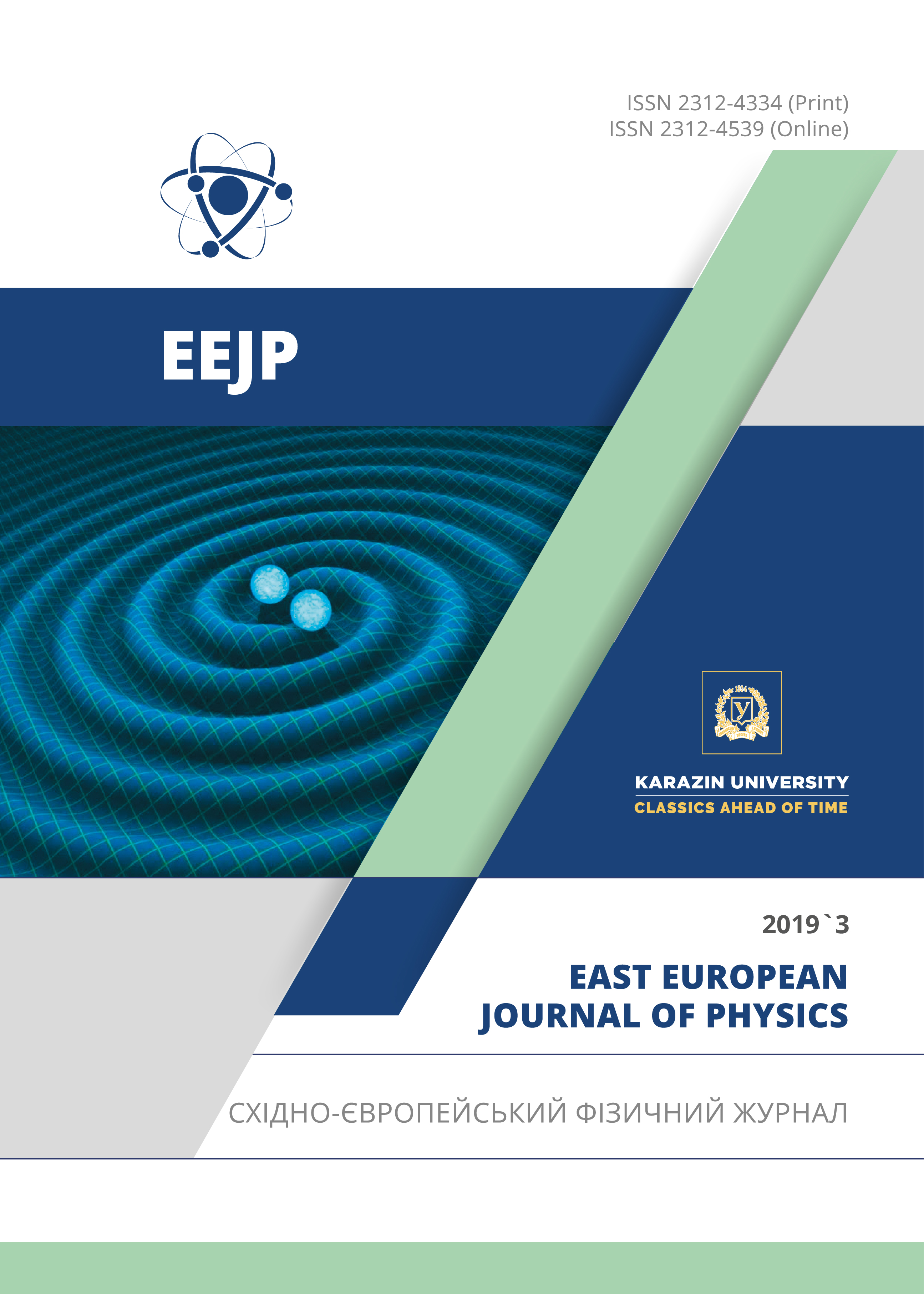On Structural Aspects of Texture Changes During Rolling of Zr-2.5%Nb Alloy
Abstract
Using X-ray structural analysis, features of changes in characteristics of crystallographic texture during cold working of Zr-2.5%Nb alloy plates by longitudinal and cross rolling has been investigated. To make original plates, longitudinal fragments and rings of Æ15.0´1.5 mm² tube annealed at 580 °C were used. The plates were rolled at room temperature to the degrees in the range from 6 to 56% with 5…7% per pass and the rate of 5...10s-1. Using the method of inverse pole figures with measuring by the Bragg-Brentano optical scheme, densities of reflections along normal to plane of the plates (pole densities) was determined. Based on this, distributions of orientations of c-axes of hcp lattice of the material have been analyzed. Local features of the distributions, which were attributed to signs of twinning effects in texture changes in the alloy, are revealed. At subsequent analysis, an effect of strain non-uniformity associated with prehistory of the plates was taken into account. It is established that the second stage of (moderate) changes in Kearns textural coefficient of the plates with the deformation degrees differs from the initial stage of accelerated changes by activation of compression twins. By the method of tilt scanning (of rocking curves) around the Bragg-Brentano position at registration of (0004) reflection intensities, changes in orientation distributions of c-axes in longitudinal and cross section of the plates for both parties were investigated. It is noted that the main textural changes in process of deformation of the plates occur in the cross-sectional plane of the original tube and are most expressed on the cross-rolling plates. The doublet in the distributions of c‑axes, characteristic for rolling texture of hcp metals of titanium subgroup, was noted just at the second stage of the texture changes in the material. Its directionality is mainly associated with the plane of cross-section of the original tube. A connection is revealed between features of the pole density distributions and expression degree of the textural doublet on the rocking curves. According to the results obtained and analysis of other publications, twinning nature of the textural doublet was confirmed and a schematic sequence of its formation was proposed with participation of compression twins of{112-2}{1-1-23} system and tensile twins of {101-2}{1-011} and{112-1}{1-1-26} systems.
Downloads
References
A. Nikulina, S. Shishov, B. Cox, F. Garzarolli and P. Rudling, Manufacturing of Zr-Nb Alloys, ZIRAT-11, Special Topic Report. ANT International, (Skultuna, Sweden, 2006), pp.45p.
J.J. Kearns, Thermal expansion and preferred orientation in Zircaloy, WAPD-TM-472, (Westinghouse Electric Corporation, Pittsburg, USA, 1965).
P.A. Tempest, J. Nucl. Mater. 92(2-3) (1980) pp.191-200, https://doi.org/10.1016/0022-3115(80)90102-6
V. Grytsyna, D. Malykhin, T. Yurkova, K. Kovtun, T. Chernyayeva, G. Kovtun, V. Kornyeyeva, O. Slabospitskaya, I. Tantsura and V. Voyevodin, East-European Journal of Physics, 2, 39-45 (2019), https://doi.org/10.26565/2312-4334-2019-2-06.
G.P. Kovtun, K.V. Kovtun, D.G. Malykhin, T.S. Yurkova and T.Yu. Rudycheva, East-European Journal of Physics, 4(3), 36-42 (2017), https://doi.org/10.26565/2312-4334-2017-3-05.
E. Tenckhoff, J. of ASTM International, 2(4), 1-26 (2005), https://doi.org/10.1520/JAI12945.
M. Zhang, B.F. Luan, Z.I. Song, R.I. Xin, K.I. Murty and Q. Liu, Scripta Materialia, 122, 77-81 (2016), https://doi.org/10.1016/j.scriptamat.2016.05.003.
Bai-feng Luan, Qing Ye, Jian-wei Chen, Hong-bing Yu, Dong-li Zhou and Yun-chang Xin, Trans. Nonferr. Met. Soc. China 23(10), 2890-2895 (2013), in: https://www.sciencedirect.com/science/article/abs/pii/S1003632613628113
R.J. McCabe, G. Proust, E.K. Cerreta and A. Misra, Int. J. of Plast. 25(3), 454-472 (2009), https://doi.org/10.1016/j.ijplas.2008.03.010
Citations
Authors who publish with this journal agree to the following terms:
- Authors retain copyright and grant the journal right of first publication with the work simultaneously licensed under a Creative Commons Attribution License that allows others to share the work with an acknowledgment of the work's authorship and initial publication in this journal.
- Authors are able to enter into separate, additional contractual arrangements for the non-exclusive distribution of the journal's published version of the work (e.g., post it to an institutional repository or publish it in a book), with an acknowledgment of its initial publication in this journal.
- Authors are permitted and encouraged to post their work online (e.g., in institutional repositories or on their website) prior to and during the submission process, as it can lead to productive exchanges, as well as earlier and greater citation of published work (See The Effect of Open Access).








